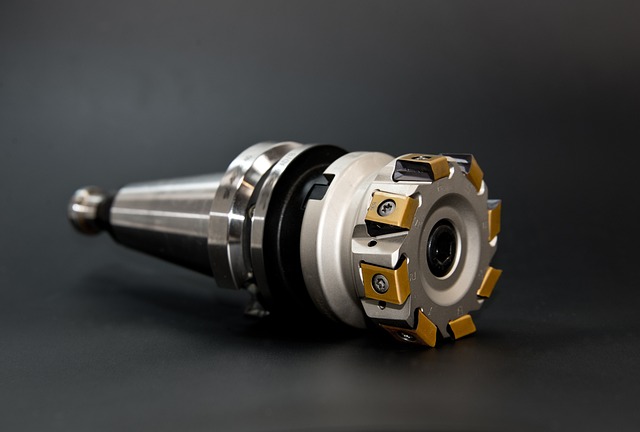Surface finish strategies for hard-to-machine alloys
Hard-to-machine alloys demand deliberate surface finish strategies to meet dimensional and functional requirements. This article outlines practical approaches—from material-aware tooling choices to process parameters and finishing methods—that help reduce wear, control vibration, and achieve required tolerances while considering efficiency and sustainability.

Hard-to-machine alloys present a mix of high strength, work hardening, and thermal sensitivity that complicates achieving quality surface finishes. Successful strategies combine material-aware approaches from metallurgy through final finishing, balancing feeds, speeds and coolant use with appropriate tooling, inserts and coatings. This article examines practical tactics for controlling wear, vibration and tolerances to deliver consistent finishing results in production and micromachining environments.
How does metallurgy affect surface finishing?
Alloy composition and microstructure directly influence how a material responds to cutting. Austenitic stainless steels, nickel-based superalloys and titanium variants typically work-harden, resist heat conduction, and can produce built-up edge on tools; each behavior alters chip formation and the achievable surface finish. Understanding metallurgy guides selection of geometry, cutting path and process staging—roughing to reduce load, semi-finishing to restore geometry, and finishing passes tuned to remove minimal material while avoiding thermal or mechanical damage to the surface.
Microstructural features such as grain size, precipitates and phase distribution affect abrasive wear and subsurface deformation. Specifying material condition (annealed vs. solution-treated) and measuring hardness before machining helps set realistic finishing targets and prevents repeated rework.
What tooling and inserts choices improve finish?
Tooling selection—insert shape, edge preparation and nose radius—plays a primary role in surface quality. Sharp geometries reduce plowing in ductile alloys but can enhance edge chipping in interrupted cuts; larger nose radii smooth peaks but demand lower depths of cut to avoid chatter. Inserts with honed edges and controlled negative or positive rake angles help manage cutting forces and produce consistent finishes.
Carbide substrates with fine grain and stable binders offer a compromise between toughness and wear resistance for many alloys. When facing extremely abrasive or high-temperature alloys, polycrystalline diamond (PCD) or cubic boron nitride (CBN) inserts can deliver superior finishing performance, provided the substrate is compatible and process heat is managed.
How do coatings and wear management help?
Coatings such as TiAlN, AlCrN and multilayer CVD variants reduce adhesive wear, improve thermal barriers and extend tool life across many hard-to-machine alloys. The right coating reduces friction and helps prevent built-up edge, which otherwise mars surface finish. Coating selection should match the substrate chemistry, cutting temperature and intended feeds and speeds.
Active wear monitoring—tracking tool life cycles and surface roughness trends—allows scheduled insert changes before excessive degradation affects tolerances. Implementing indexed insert strategies or wear-resistant grades for finishing passes preserves consistent quality and reduces scrap.
What feeds, speeds and coolant practices matter?
Optimizing feeds and speeds is central to finishing. Lower cutting speeds can reduce heat generation in heat-sensitive alloys, while higher speeds with appropriate coatings and coolant can improve surface quality in some nickel-based alloys by promoting favorable chip formation. Feed per tooth and depth of cut must be balanced to minimize tool deflection and avoid inducing residual stresses that raise surface roughness.
Coolant strategies influence thermal control and chip evacuation. High-pressure coolant directed at the tool–chip interface improves surface integrity and reduces adhesion in binder-prone alloys. Consider through-tool coolant or minimum quantity lubrication (MQL) for specific micromachining or finishing operations where traditional flood cooling may be impractical or environmentally undesirable.
How can toolholders, vibration and tolerances be controlled?
Toolholder rigidity, spindle runout and clamping repeatability are fundamental to achieving tight tolerances and low surface roughness. Use short, stiff toolholders and minimize overhang to reduce bending and vibration. Balancing spindles and properly seating holders reduces harmonic excitation that manifests as feed marks or waviness on the finished surface.
Damping strategies—such as tuned mass dampers, damped toolholders, or modulated feeds—can mitigate chatter in long-reach or thin-wall machining. Establishing machine-specific vibration signatures and correlating them to surface measurements helps set safe machining windows and maintain dimensional tolerances.
What finishing and micromachining strategies support sustainability?
Finishing techniques—light finishing passes, superfinishing, and abrasive polishing—should remove minimal material while meeting functional requirements. Micromachining approaches, such as micro-endmilling and precision grinding, allow fine control of surface texture and reduce the need for additional corrective processes. Process planning that reduces scrap and rework contributes to sustainability goals by conserving material and energy.
Adopting coolant-reduction measures, recyclable cutting fluids and longer-lived coated inserts lowers environmental impact. Lifecycle thinking—assessing tool consumption, energy use, and waste—supports choices that balance surface quality with sustainability objectives.
In summary, delivering consistent surface finishes on hard-to-machine alloys requires an integrated approach: understand the metallurgy, choose appropriate tooling and coatings, optimize feeds and speeds with effective coolant strategies, and control toolholding and vibration. Combining process monitoring and planned finishing operations preserves tolerances and extends tool life while supporting efficiency and sustainability across machining and micromachining applications.





